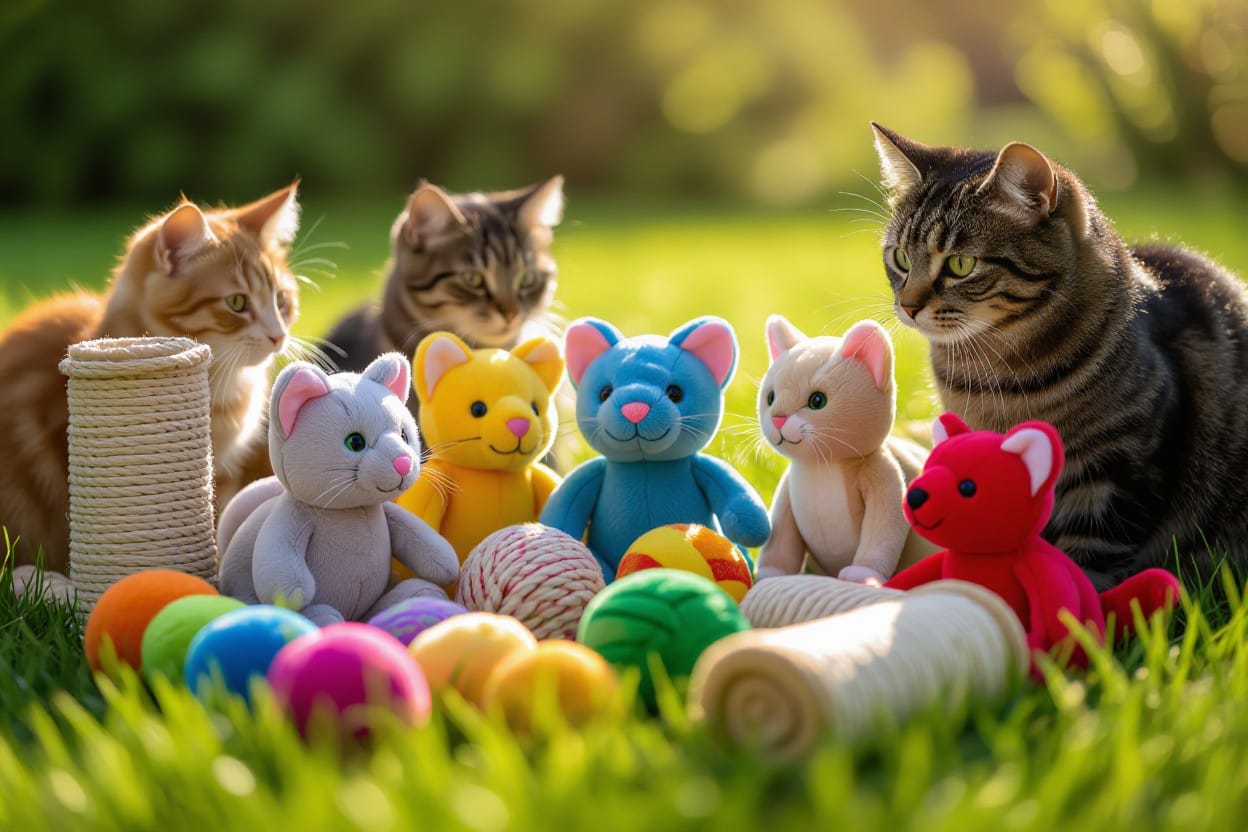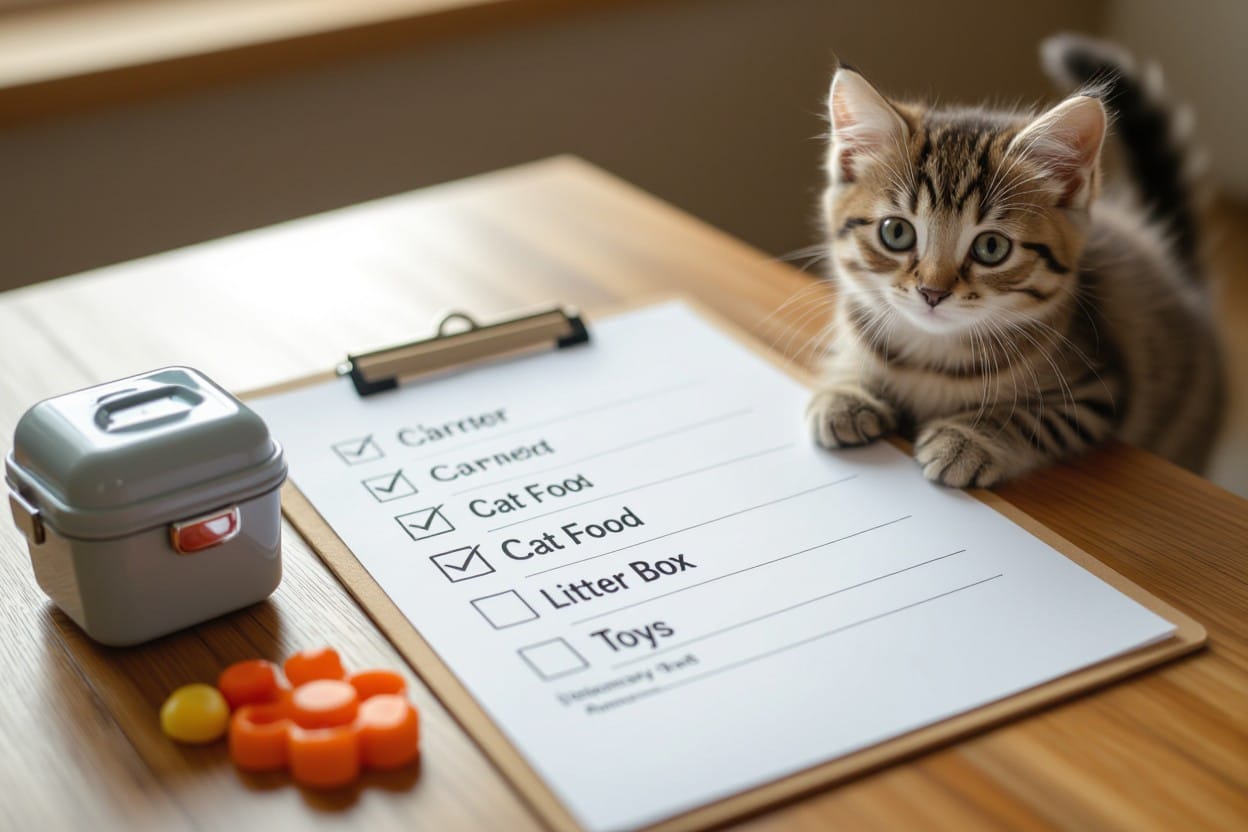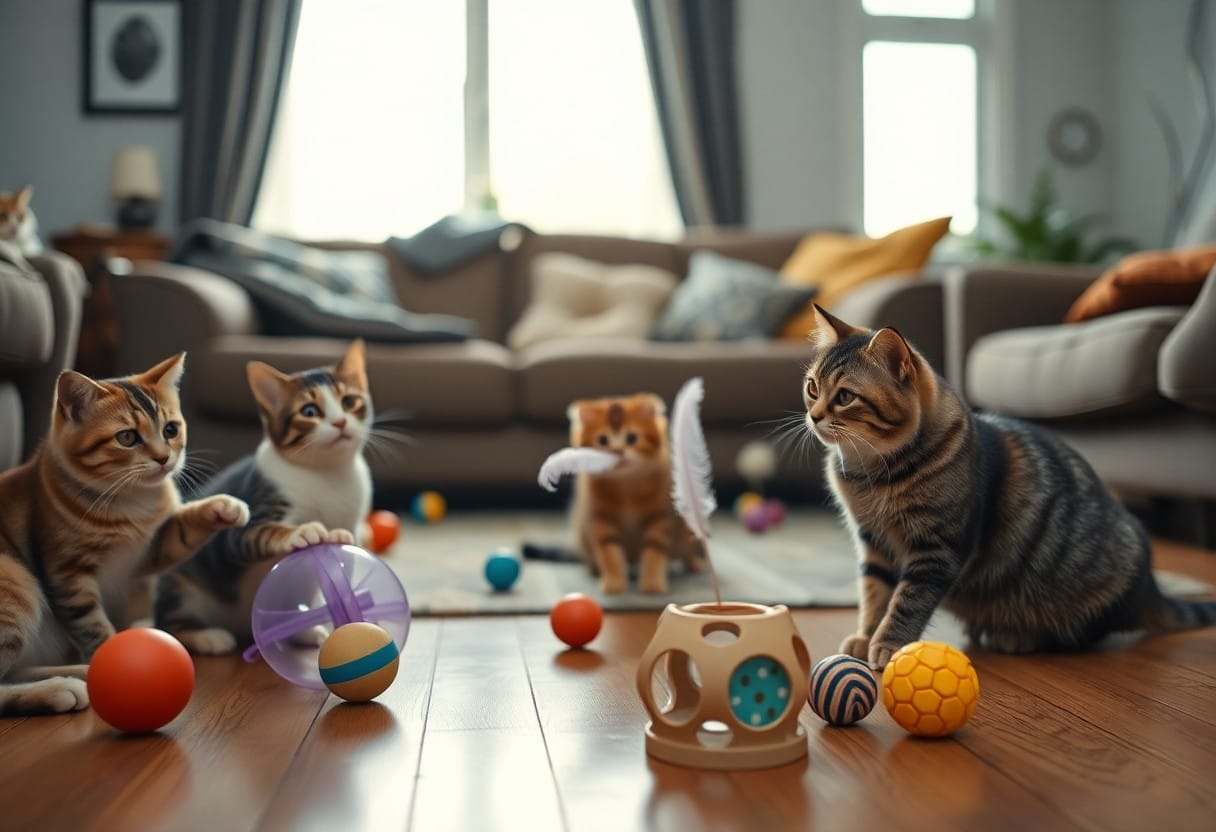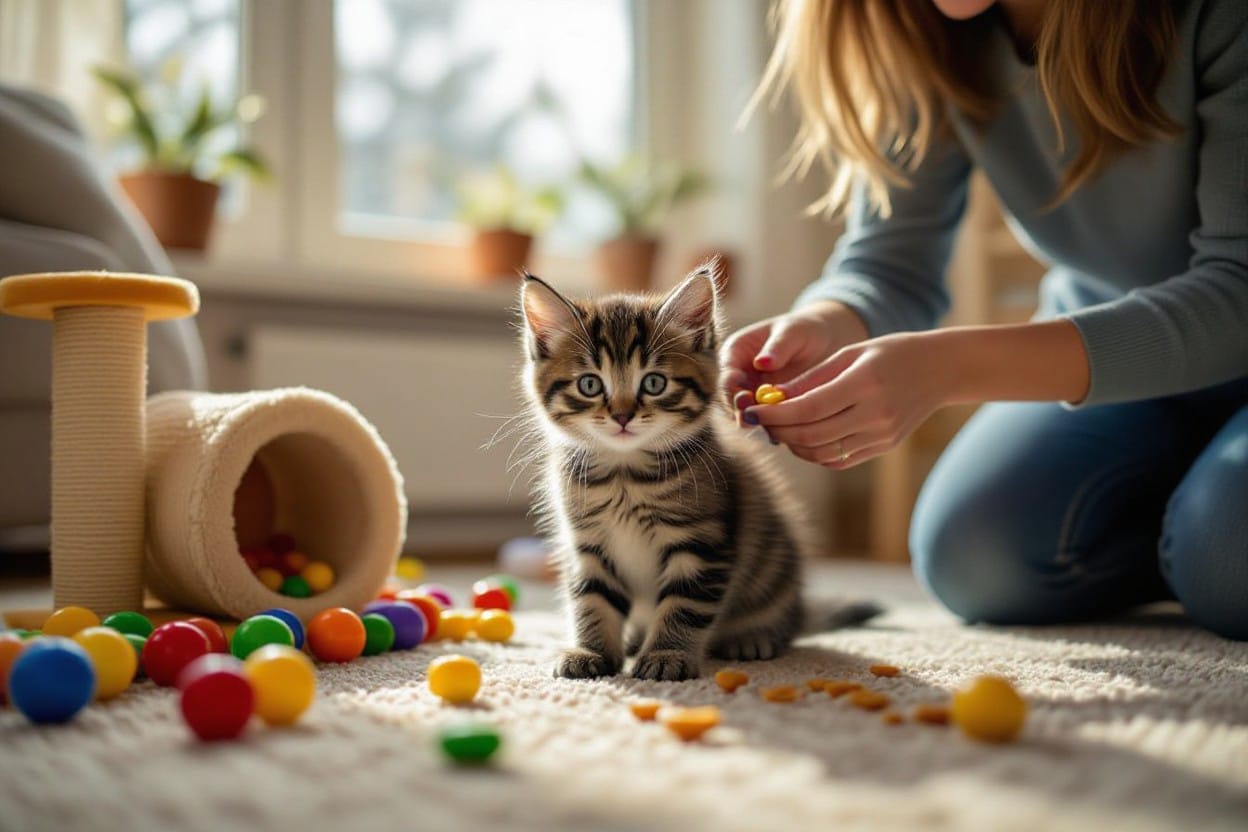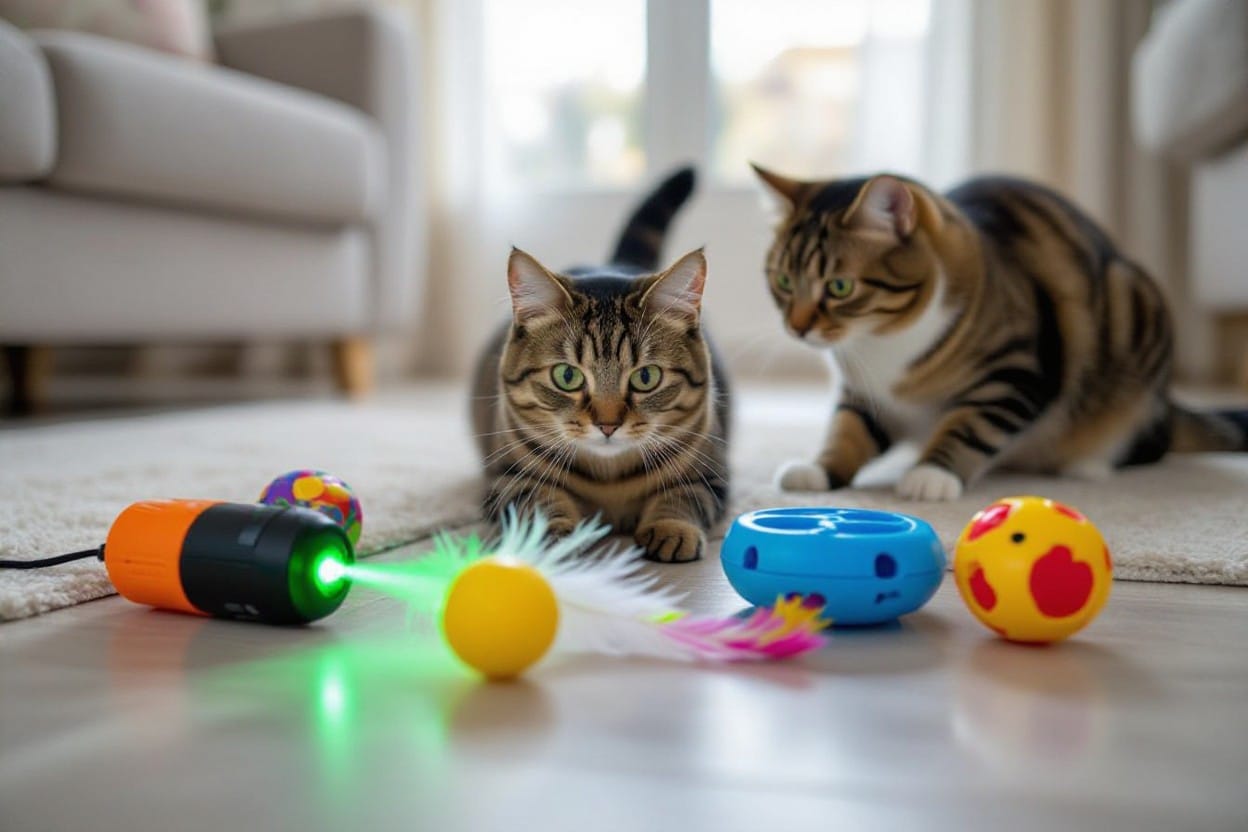There’s nothing quite as entertaining and heartwarming as watching a playful kitten explore the world around them. Understanding your kitten’s playful behavior is important in fostering a strong bond and ensuring their physical and mental well-being. In this comprehensive guide, we will look into the various aspects of playful behavior in kittens, from the reasons behind their antics to tips on how to nurture their playful nature.


The Basics of Kitten Behavior
Defining Playful Behavior in Kittens
Some of the most endearing qualities of kittens are their playful antics. Playful behavior in kittens is a natural, instinctual behavior that serves important developmental purposes. It is characterized by activities such as pouncing, chasing, and wrestling, often directed towards toys, other animals, or even human hands and feet.
Kittens use play to hone their hunting skills, practice social interactions, and expend energy. Understanding and encouraging this behavior is crucial for their overall well-being and development.
Factors Influencing Playfulness
Some factors that influence a kitten’s playfulness include age, breed, and individual personality. Younger kittens tend to have more energy and engage in play more frequently, while breeds known for their high activity levels, such as the Siamese or Bengal, may exhibit more intense play behaviors.
- Age
- Breed
- Personality
Knowing your kitten’s breed and individual personality can help tailor playtime activities to suit their preferences and energy levels, ensuring a happy and healthy kitten.
Playfulness
Kittens display a wide range of play behaviors that can vary in intensity and duration. From gentle batting at a feather toy to full-on zoomies around the house, each kitten has its unique way of expressing playfulness. As a pet owner, observing and understanding these behaviors can help strengthen the bond between you and your furry friend.
Types of Playful Behavior
The behavior of kittens during play can be categorized into different types. Understanding these different types can help us comprehend their playful nature better. Playful behavior in kittens is not only adorable but also serves important developmental functions. It helps them hone their physical abilities, social skills, and hunting instincts.
- Social Play: Interaction with Other Kittens
- Object Play: Interacting with Toys and Objects
- Self-Directed Play: Kitten Entertains Itself
Social Play: Interaction with Other Kittens
One of the most common types of play behavior in kittens is social play, where they interact with other kittens. This type of play involves activities like chasing, wrestling, and play fighting. Social play is crucial for kittens as it helps them learn vital social cues and boundaries from a young age. Through social play, kittens learn communication skills and develop their coordination and agility.
Object Play: Interacting with Toys and Objects
An vital aspect of a kitten’s play behavior is interacting with various toys and objects. Kittens have a natural curiosity and love exploring their environment through play. Object play helps kittens sharpen their hunting instincts and improve their cognitive abilities. Providing kittens with a variety of toys can keep them engaged and mentally stimulated.
Object play is not only entertaining for kittens but also serves a purpose in their development. It allows kittens to practice their pouncing, stalking, and batting skills, mimicking the behaviors they would exhibit in the wild while hunting prey.
Self-Directed Play: Kitten Entertains Itself
Assuming the role of their own playmate, kittens engage in self-directed play. This type of play involves activities like chasing a tail, rolling around, and exploring their surroundings independently. Self-directed play is an important part of a kitten’s growth as it encourages independence and creativity. Through self-directed play, kittens learn to entertain themselves and build confidence in their abilities.
Play is an integral part of a kitten’s life and plays a significant role in their overall well-being. It is vital for kitten owners to provide ample opportunities for play to support their physical, mental, and emotional development. Understanding the various types of playful behavior exhibited by kittens can help foster a healthy and happy environment for them to thrive in.
Developmental Stages of Kitten Play
Neonatal to Socialization Phase (0-7 Weeks)
For kittens in the neonatal to socialization phase, which spans from birth to around 7 weeks of age, play behavior is minimal as their primary focus is on survival. While in this stage, kittens are heavily reliant on their mother for nourishment and warmth. However, during this time, they start to develop their senses, coordination, and social skills through interactions with their mother and littermates. Playful behavior starts to emerge towards the end of this phase as kittens begin to explore their environment and interact with their siblings.
Play Prowess: The Peak Play Phase (7-14 Weeks)
Assuming the playful title of “peak play phase,” kittens between 7 to 14 weeks of age exhibit a surge in playful behavior. This stage is crucial for their development as they refine their hunting instincts, coordination, and social skills through play. Kittens engage in mock hunting, pouncing, and wrestling with their littermates, honing their physical abilities and learning boundaries through play interactions.
Socialization during this period is vital as kittens learn important social cues and communication skills that will benefit them in their interactions with other cats and humans later in life. It is vital to provide them with a variety of toys and interactive play opportunities to support their physical and mental development during this critical phase.
Adolescent Play Behavior (14 Weeks to Adulthood)
Now in the adolescent stage from 14 weeks to adulthood, kittens continue to exhibit playful behavior but in a more refined manner. Play during this stage serves multiple purposes, including exercise, mental stimulation, and social bonding. Kittens may start to assert their independence and establish their place within their social hierarchy through play interactions with other cats in the household.
Play continues to be an vital part of a cat’s life even as they transition into adulthood. Providing them with engaging toys, interactive play sessions, and opportunities for social interaction will help maintain their physical and mental well-being throughout their lives.

Understanding and Managing Playful Aggression
Once again, understanding playful aggression in kittens is crucial to fostering healthy play habits. It’s common for kittens to engage in rough play as they learn social skills and boundaries. However, distinguishing between playful behavior and true aggression is crucial for cat parents to ensure a safe and harmonious environment.
Identifying Playful Versus Aggressive Behavior
Aggression: Playful aggression may involve behaviors such as pouncing, wrestling, and chasing. Kittens can often vocalize during play, but it’s usually playful growls or meows. However, if a kitten’s body language becomes tense, with flattened ears, dilated pupils, and hissing, it may indicate aggression rather than playfulness.
Tips to Redirect Aggressive Play
Aggression: To redirect aggressive play in kittens, provide appropriate toys for them to channel their energy and instincts. Interactive toys like feather wands or laser pointers can help redirect their focus away from rough play with humans. Additionally, ensure your kitten has plenty of vertical spaces to climb and explore, which can mimic hunting behavior and alleviate pent-up energy.
- Use toys that mimic prey objects to redirect aggression.
- Provide scratching posts and climbing trees for physical outlets.
Playful: It’s important to understand that playful aggression is a normal part of kitten behavior and is not intended to harm. Playful kittens may exhibit behaviors like play biting or swatting, but their body language remains relaxed and playful. Knowing how to differentiate between the two can help cat parents set boundaries and redirect play in a positive way.
- Redirect play towards appropriate toys when playful aggression escalates.
- Offer plenty of interactive playtime to keep your kitten engaged and stimulated.
Step-by-Step Guide to Encouraging Positive Play
Unlike adult cats, kittens are inquisitive, energetic, and always ready to play. Understanding how to encourage positive play behavior is crucial in their development. Here is a comprehensive guide to help you navigate the world of kitten play.
| Choosing the Right Toys for Your Kitten | Creating a Playful Environment |
Choosing the Right Toys for Your Kitten
Guide your choice of toys based on your kitten’s age, size, and preferences. Toys that encourage chasing, pouncing, and batting are ideal. Interactive toys like feather wands, laser pointers, and puzzle feeders can stimulate both physical and mental activity for your kitten.
Creating a Playful Environment
Positive play experiences are shaped by the environment you provide for your kitten. Ensure there are plenty of safe spaces to explore, climb, and hide. Cat trees, scratching posts, and tunnels can enrich their environment and encourage active play.
To create a playful environment, consider adding vertical spaces like shelves or perches for your kitten to climb and observe their surroundings. Rotating toys and providing a variety of textures can keep their interest piqued and prevent boredom.
Interactive Play Sessions: Building Bonds
Guide your interactive play sessions by using toys that mimic prey-like movements to engage your kitten’s natural hunting instincts. Rotate toys regularly to prevent habituation, and always end play sessions on a positive note to reinforce a healthy bond with your kitten.
Toys that encourage interactive play sessions are imperative for building a strong bond with your kitten. Incorporate toys that allow you to mimic prey-like movements, such as feather wands or small toys that can be tossed for chasing. Interactive play not only keeps your kitten physically active but also strengthens the bond between you and your feline companion.
The Pros and Cons of Different Play Strategies
Many factors come into play when considering the various play strategies for kittens. It is vital to weigh the pros and cons of each to ensure that your kitten’s playtime is both enjoyable and beneficial for their development. Below is a comprehensive comparison of the different play strategies:
| Play Strategy | Pros and Cons |
| Free Play | Allows kittens to express natural behaviors; fosters independence and creativity May result in less structured development and potential for less exercise |
| Structured Play Sessions | Provides guidance and interaction for kittens; helps in training and socialization May limit kittens’ natural instincts and creativity |
Free Play Versus Structured Play Sessions
The approach to play in kittens can vary significantly between free play and structured play sessions. Free play allows kittens to explore their surroundings and engage in activities independently, promoting creativity and independence. However, structured play sessions provide guidance and interaction, assisting in training and socialization. It’s crucial to balance both approaches to ensure a well-rounded development for your kitten.
The Role of Technology in Kitten Play
Even in kitten play, technology plays a significant role in modern times. Interactive toys, laser pointers, and automated devices can provide mental stimulation and exercise for kittens, especially when their owners are away. However, it’s vital to remember that technology should not replace human interaction or traditional play methods entirely. A healthy balance of both is key to a kitten’s overall well-being.
Cons: While technology can enhance playtime for kittens, over-reliance on gadgets can lead to a lack of physical exercise and social interaction, which are crucial for their development. It’s important to monitor and regulate the use of technology in your kitten’s play routine to ensure a healthy and balanced playtime experience.
Advanced Tips for Long-term Playfulness
- Maintaining Interest as Your Kitten Ages
Any cat owner knows that as kittens grow older, their attention spans and interests can change. To ensure continued playfulness in your feline companion, it is crucial to rotate and introduce new toys regularly. This prevents boredom and stimulates their natural hunting instincts. Consider interactive toys that mimic prey or toys that dispense treats to keep your kitten engaged and mentally stimulated.
Creating a play schedule is also beneficial in maintaining your kitten’s interest. Establishing a routine can help them anticipate playtime and prevent them from becoming restless or overly demanding. Remember to incorporate a variety of play styles, such as chasing, pouncing, and interactive play, to cater to your kitten’s evolving preferences.
- Adapting Play to Your Kitten’s Personality
For cat owners, understanding their kitten’s individual personality is vital in tailoring playtime to suit their needs. Some kittens may be more energetic and require vigorous play sessions, while others may prefer gentle interactions. Observing your kitten’s behavior cues can guide you in adapting play to their personality.
Your kitten’s breed and background can also influence their play preferences. For example, active breeds like Abyssinians may enjoy high-energy play, while Ragdolls may prefer more relaxed activities. By recognizing and accommodating your kitten’s unique characteristics, you can ensure that play remains enjoyable and enriching for both of you.
Common Questions and Concerns
When Kittens Play Too Rough
The playful nature of kittens is a joy to watch, but it can sometimes escalate into rough behavior that causes concern for pet owners. The key is to understand that rough play is a natural part of a kitten’s development. Kittens engage in play to hone their hunting skills and establish social hierarchies within their litter. However, if the rough play becomes too aggressive or causes harm, it’s important to intervene.
The best way to address rough play is redirection. When you notice your kitten getting too rough, redirect their attention to a suitable toy or object. This helps them learn appropriate ways to play without resorting to aggressive behavior. It’s also vital to provide plenty of interactive playtime with your kitten to help expend their energy in a positive way.
Dealing with a Lack of Interest in Play
Even though play is a natural behavior for kittens, some may show a lack of interest in playtime. This can be concerning for owners who want to ensure their kitten is happy and healthy. If your kitten seems disinterested in playing, there could be various reasons for this behavior.
Common reasons for a lack of interest in play include health issues, stress, or simply a mismatch in play preferences. If you notice a sudden change in your kitten’s play behavior, it’s vital to consult with your veterinarian to rule out any underlying health concerns. Additionally, try experimenting with different types of toys and play styles to see what captures your kitten’s interest. Recall, every kitten is unique, and it may take some trial and error to find what best motivates your feline friend to play.
Conclusion
Taking this into account, understanding playful behavior in kittens is crucial for owners to ensure their pets are happy and healthy. By recognizing the different types of play, such as predatory and social play, owners can better interact with their kittens and provide them with appropriate toys and activities to stimulate their natural instincts.
By following this comprehensive guide, owners can build a strong bond with their kittens through play and create a positive environment for them to thrive in. Recall, play is not just a form of entertainment for kittens, but a vital part of their development and well-being.
FAQ
Q: What is the importance of understanding playful behavior in kittens?
A: Understanding playful behavior in kittens is crucial as it helps pet owners provide the right environment and stimulation for their kittens to thrive. Play is crucial for their physical, mental, and emotional development.
Q: How do kittens learn through play?
A: Kittens learn important life skills through play, such as hunting, social interaction, and coordination. Play also helps them build confidence and strengthen their bond with their human companions.
Q: What are common playful behaviors exhibited by kittens?
A: Common playful behaviors in kittens include chasing objects, pouncing, wrestling with siblings or toys, and exploring their environment. These behaviors are natural and crucial for their growth.
Q: How can pet owners encourage and engage in play with their kittens?
A: Pet owners can encourage play in kittens by providing a variety of toys, engaging in interactive play sessions, setting up safe and stimulating play areas, and rotating toys to keep things interesting. Playtime should be a fun and bonding experience for both the kitten and the owner.
Q: When should pet owners be concerned about their kitten’s playful behavior?
A: Pet owners should be concerned if their kitten shows a sudden decrease in playfulness, becomes overly aggressive during play, or displays lethargy or disinterest in activities. These could be signs of underlying health issues that require veterinary attention.
